Brakes
Simply put, brakes are designed to stop or prevent the movement of the wheel. More difficult is determining the right brake for the right application. Caster Technology offers a variety of styles of brakes to fit your usage need. Let us help you find the right brake for the right caster, every time.
Thumb Screw Brakes Economical and best used with brakes are not frequently engaged or disengaged. Primarily used with small (2″ or 3″) dual-wheel or log (wide wheel) caster. | |
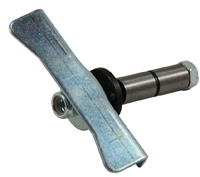 | Cam or Friction Brake For very hard wheels such as steel or cast iron where tread brakes have a harder surface to engage and immobilize. Fewer parts making it more economically priced. Engaging the brake moves a cam and tightens the caster rig against the wheel creating friction. |
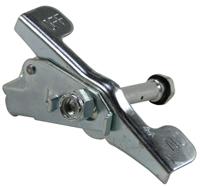 | Top or Thread Lock Brake Most commonly used. This brake is effective with softer wheels such as rubber, TPR, polyurethane, and phenolic. Engaging the pedal moves a cam and lever, which make contact with the top tread of the wheel. |
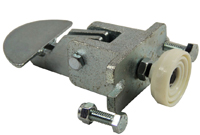 | Pedal Style Wheel Brake Not available for all casters and rarely used on rigid casters. Generally used on mid-size (3 x 1 through 6 x 1-1/4) casters. Pedal style brake may lock the wheel only, the direction only and often both. When it locks both, it is referred to as “Total Locking Brake.” |
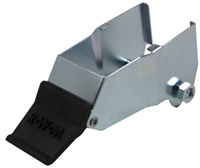 | Face Contact Brake Design provides for a firmer contact with wheel face. Generally used for larger (2″ wide or larger) casters. Two-pedal brake allows for easier disengagement. |
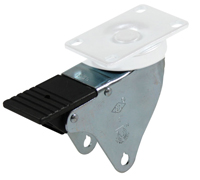 | Total Locking Brake Not available on all casters. Most commonly used on mid-size (3×1 through 6×2) casters. Single action mechanism locks both the wheel and the swivel for complete immobilization. Swivel radius increases due to the brake pedal. |
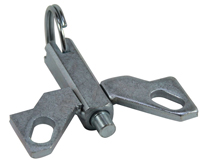 | Position Lock Brake Economical and one of the most under-rated caster brake options available. This is very helpful for maneuvering a heavy application into a tight spot with one person. Spring-loaded key can be engaged to lock the swivel caster into any 90-degree position. Generally available for larger (2″ wide or larger) casters. |
 | Direction Lock Brake Similar to the “Position Lock Brake,” this locks the swivel, effectively converting the swivel caster into a rigid caster. Locks the swivel at any position. This brake is also very helpful for maneuvering a heavy application into a tight spot with one person. Compatible with medium duty (1-1/4″ wide) casters. |
Compression and Decompression Brakes Compression brakes are used to engage when weight is place on caster. Decompression brakes are normally engaged and released when weight is placed on casters. These brakes are available on twin-wheel casters. |
